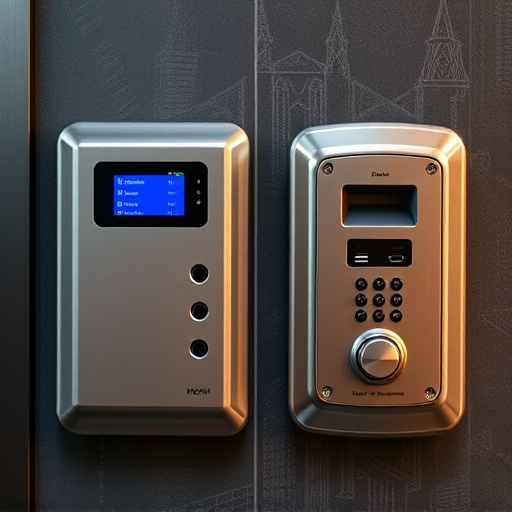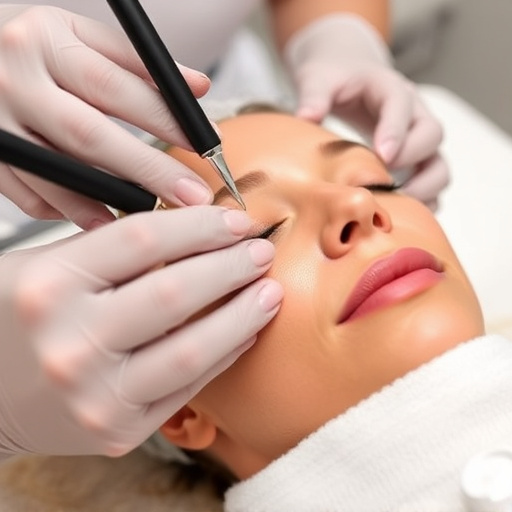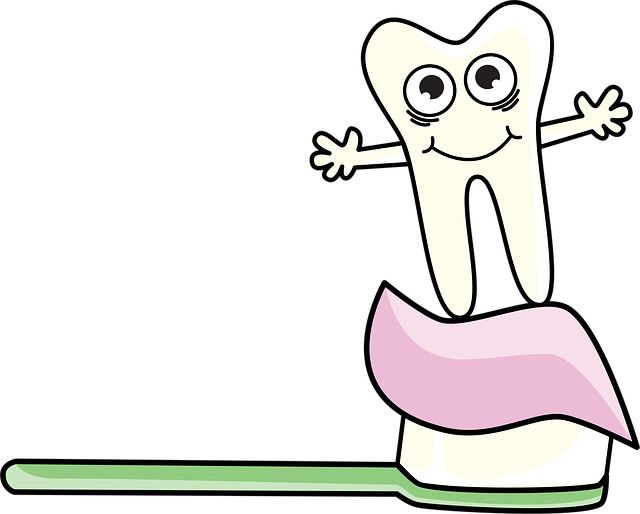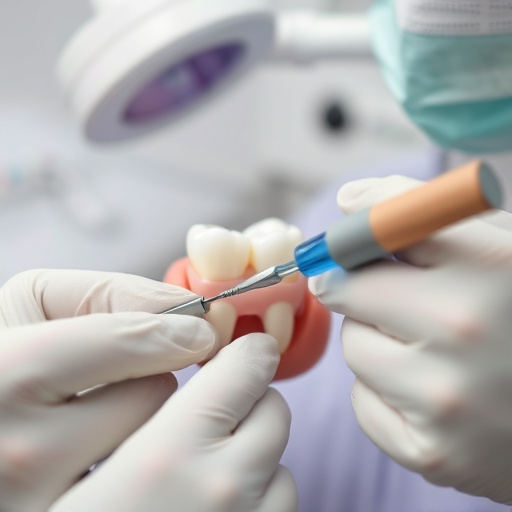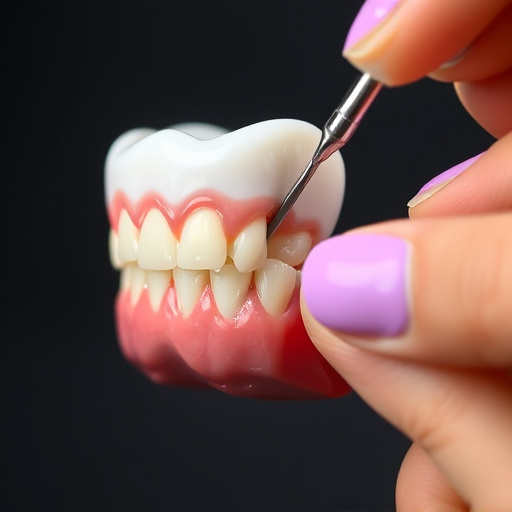Moderate periodontitis, a common dental issue causing gum inflammation and potential tooth loss, requires early detection through regular check-ups. Laser gum therapy offers a non-invasive treatment using focused light to target bacterial infections, promote healing, and regenerate tissues, providing an effective solution with minimal discomfort and faster recovery compared to traditional methods. However, complex cases may need alternative approaches, emphasizing the importance of dental consultation for optimal treatment, including laser therapy and cosmetic procedures.
“Laser gum therapy emerges as a revolutionary treatment option for moderate periodontitis, targeting deep-seated dental issues with precision. This article delves into the understanding of periodontitis, its impact on oral health, and how laser technology offers a minimally invasive solution. We explore the mechanisms and benefits of laser gum therapy, including improved healing and reduced inflammation. Furthermore, we weigh the advantages against considerations, providing insights for those contemplating this innovative approach to periodontal care.”
- Understanding Moderate Periodontitis and Its Impact
- How Laser Gum Therapy Works Mechanisms and Benefits
- The Advantages and Considerations for Laser Gum Treatment
Understanding Moderate Periodontitis and Its Impact

Moderate periodontitis is a common dental condition characterized by inflammation and infection of the gums, leading to significant damage to the gum tissue and jawbone. This progressive disease often goes unnoticed until it reaches an advanced stage, affecting not only oral health but also overall systemic well-being. The impact can be profound, resulting in tooth loss, reduced bite force, and even impacting facial aesthetics due to bone and tissue degradation.
Early detection through routine oral exams is crucial. Regular dental cleanings and check-ups play a vital role in managing periodontitis. Laser gum therapy offers a non-invasive approach, utilizing advanced technology to target and eliminate bacterial infections at the root of the problem. This innovative treatment has gained prominence as an effective solution for moderate periodontitis, promoting healing, regenerating tissues, and ultimately preserving oral health.
How Laser Gum Therapy Works Mechanisms and Benefits

Laser gum therapy offers a revolutionary approach to treating moderate periodontitis. This advanced dental procedure utilizes focused beams of light to interact with soft and hard tissues in the mouth, promoting healing and regeneration. The precise energy delivered by lasers triggers various biological responses. It helps reduce inflammation, kills bacteria, stimulates fibroblasts for tissue repair, and promotes angiogenesis, or new blood vessel formation, which is crucial for oxygenated and nutrient-rich environments that support gum health.
One of the key benefits of laser gum therapy is its minimal invasiveness compared to traditional surgical methods. It preserves more healthy tooth structure, reduces post-operative discomfort, and speeds up recovery times. Moreover, lasers can precisely target problematic areas without affecting surrounding healthy tissues. This specificity not only enhances the effectiveness of treatment but also aligns well with general dentistry practices, as it minimizes the need for additional procedures like dental crowns.
The Advantages and Considerations for Laser Gum Treatment

Laser gum therapy offers a revolutionary approach to treating moderate periodontitis, providing several advantages over traditional methods. It utilizes advanced laser technology to precisely target and destroy bacterial biofilm and inflamed tissue, promoting healing and regenerating gum tissues. This minimally invasive procedure is often more comfortable for patients compared to surgical options, with faster recovery times and reduced post-treatment discomfort.
When considering laser gum therapy, it’s essential to weigh the benefits against potential drawbacks. While it can effectively reduce pocket depths and improve gum health, not all cases are suitable for this technique. Certain complex periodontal issues or advanced bone loss might require alternative treatments like dental implants or surgical grafting. Additionally, patients should discuss their medical history and any concerns with their dentist to ensure laser gum therapy is the best course of action, considering its effectiveness in conjunction with other cosmetic procedures such as dental bonding and cosmetic fillings for optimal oral health and aesthetics.
Laser gum therapy offers a promising approach for managing moderate periodontitis, providing precise targeting of damaged tissue with minimal invasiveness. By stimulating collagen production, reducing bacterial loads, and promoting healing, this innovative treatment can significantly improve periodontal health. However, like any procedure, it has its advantages and considerations, including cost, accessibility, and patient suitability. Further research and clinical trials are necessary to fully explore the potential of laser gum therapy as a game-changer in periodontics.
